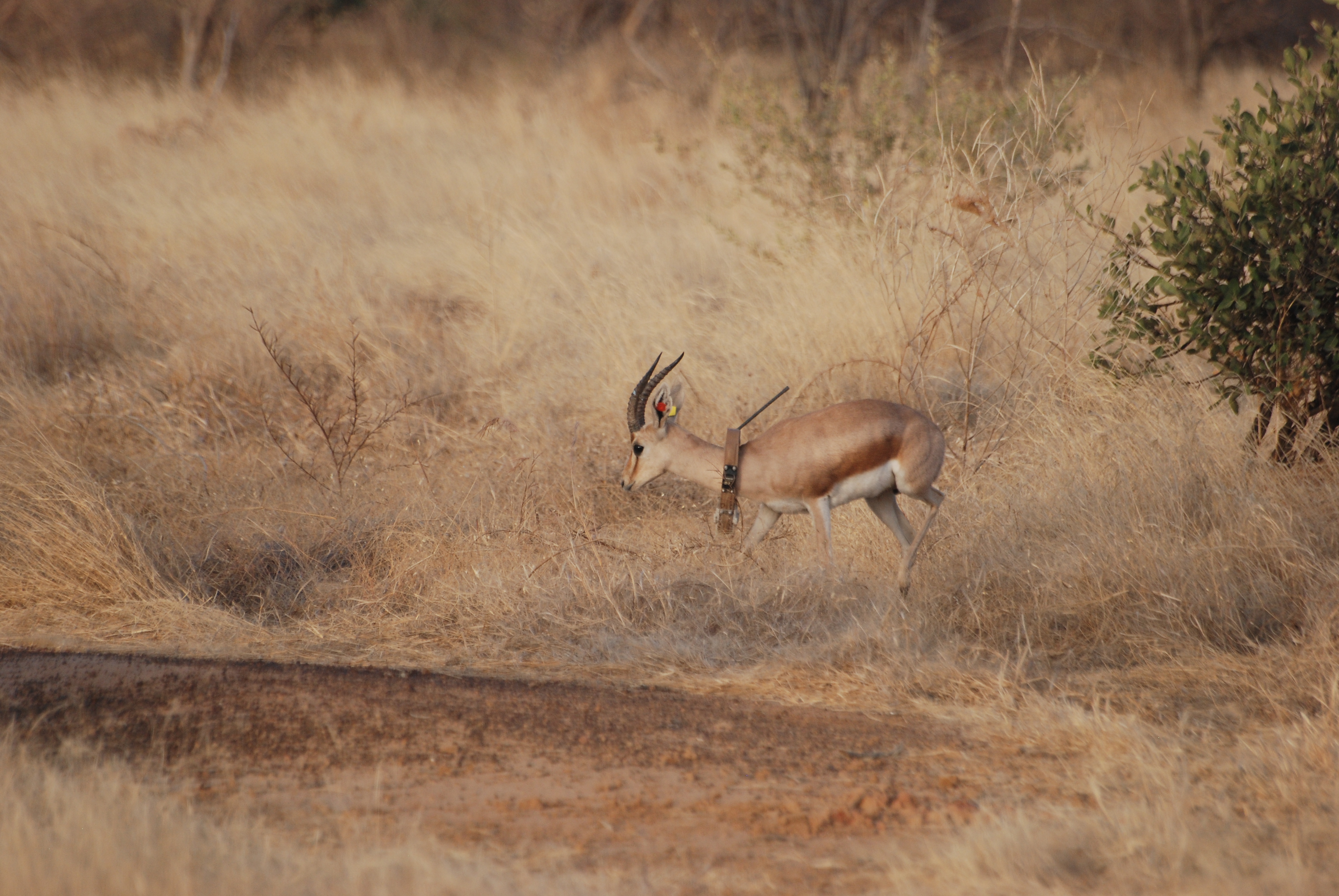← Back
Dorcas gazelles’ seasonal patterns of activity recorded by Argos

Dorcas gazelles live North of Sahel, in Africa. In some countries they are vulnerable and reintroducing them requires assessing their ability of adaptation to a new environment. Argos transmitted activity data recorded by collars enable to better understand their modes of activities depending on the seasons.

A dorcas gazelle with a GPS-collar recording activities, transmitted by Argos. The collar weights less than 500 g, i.e. 3% of the animal’s weight (credit C Enseñat
The dorcas gazelle (Gazella dorcas) is one of the smallest gazelle species (no more than 16 kg for adult males). They live in North Africa, from the Atlantic coast to the Red Sea, North of Sahel up to the Mediterranean coasts. This leads to a variety of habitats and climates they can be found in, and thus of food and water availability but also likely of their daily activity rhythms. Poaching lowered their population down to a threatening level, even if their situation is not at the same level of vulnerability in all the countries and habitats they are found in.
The Estación Experimental de Zonas Aridas (National Spanish Research Council, CSIC) in Almería (Spain) led a project to reintroduce the Dorcas gazelle to Senegal from where they disappeared in the 1970s. As part of the project, a monitoring of some reintroduced population to assess their ability to adapt and the adequacy of the environment to host them.
Three male dorcas gazelles born in captivity were equipped with GPS collars transmitting by Argos, with built-in activity recorders composed of dual-axis motion sensors sensitive to head and neck movements and of a temperature sensor. The gazelles were released in the Katané enclosure (see map) into semi-captive conditions. It must be noticed that the small size of the sample limits somehow the scope of the conclusions.
More info about land animals tracking
Results show that the main activity of the gazelle, whatever the season, is “resting”, i.e. from the sensor point of view, not moving. Outside these “resting” phase, the most time is dedicated to feeding, then moving quietly (“displacement”) and even less often running (7-8% of the time). The pattern of activities during a day is different with respect to the seasons, though. Temperature with respect of the hour of the day seems to be the most important factors determining the gazelles’ activities.
Three different daily patterns were found: one diurnal with motion activities higher during the light than during the dark period and the most activities at mid-day, during the dry-cool season (December to February; dry period with average temperatures lower than 28°C); a bimodal pattern with maximum activity at dusk and during the dark hours and resting mostly at mid-day, during the hot-dry season (April; also a dry period, but with temperature higher than 30°C on average); and a transitional pattern in March, in which activities are higher during the light than during the dark periods but in which, at mid-day, the time spent resting is similar to the one dedicated to any other activity (feeding, moving, running).
The switch between the diurnal rhythm and the bimodal one is made when the average high temperatures exceed the dorcas gazelle’s body temperature (38.5 – 39 °C). Their inactivity during hot hours facilitates thermoregulation and avoids the thermal stress of mid-day. This is an adaptation displayed by various species living in extreme conditions.
This study shows, for the first time, the activity patterns of the dorcas gazelle. It also illustrates their ability to adapt to environmental climate conditions, including ones with extreme high temperatures. To do that, they are able to modify their daily activity patterns. This capacity is crucial to assure the success of its reintroduction.
Reference & links
- Teresa Abáigar, Mar Cano, Conrad Ensenyat, 2017: Time allocation and patterns of activity of the dorcas gazelle (Gazella dorcas) in a sahelian habitat, Mamm Res, doi 10.1007/s13364-017-0334-0
Photo Two dorcas gazelles (credit C Enseñat)
